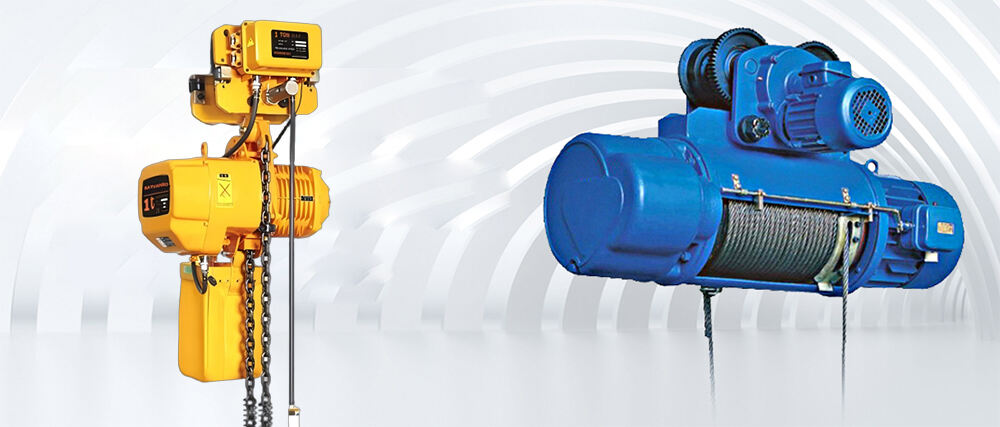Currently, the hoist industry offers two types of products: electric chain hoists and electric wire rope hoists. What are the differences between electric chain hoists and electric wire rope hoists?

The main differences between chain electric hoists and wire rope electric hoists:
1.Volume
Because the chain hoist chain's winding mechanism is a chain, the chain's rise and fall is driven by the rotation of a sprocket. The sprocket's axial dimension, or width, is only 1.6 times the chain's width. A wire rope hoist's winding mechanism is a wire rope, and its rise and fall are driven by the movement of a drum. The wire rope must be fully wound around the drum for at least three turns, which is also the case when hoisting at high heights. The drum of a wire rope hoist is larger than that of a complete chain hoist. As the hoist height increases, the drum needs to be extended, resulting in a wire rope hoist's volume being several or even dozens of times larger than a chain hoist of the same specifications.
2.Lifting Height:
The wire rope of a wire rope electric hoist is wound around the drum, causing elastic deformation. The side closest to the drum is subject to pressure, while the opposite side is subject to tension. The smaller the drum diameter, the greater the deformation of the wire rope, and the greater the pressure and tension on the opposite side of the wire rope. To ensure that these forces do not exceed the allowable stress of the wire rope, the drum diameter needs to be larger to minimize excessive deformation. Therefore, design standards stipulate that the drum diameter of an electric hoist must be at least 20 times the diameter of the wire rope. In contrast, the chain of a chain hoist is hinged at the center of the link, and the chain is primarily subject to tension. To reduce the compressive strength between the link and the contact area between the link and the sprocket, the sprocket of a chain hoist is generally designed with five or six sockets. For lower lifting capacities and lifting speeds, a four-hole design is also available. Because of these factors, the diameters of the wire rope hoist's drum and hook sheaves are significantly larger than those of the chain hoist's sprockets and hooks of the same specification. Consequently, the hook spacing of a chain hoist is shorter than that of a wire rope hoist of the same specification. In other words, a chain hoist's lifting height is higher than a wire rope hoist's for the same height.
3.Travel Distance:
The axis of a running wire rope electric hoist is parallel to the line of symmetry of the wire rope electric hoist trolley's running track. A chain electric hoist can be installed with the axis at a 90° angle to the line of symmetry of the running track. Thus, under the same conditions and track length, a chain electric hoist has a greater travel distance than a wire rope electric hoist. Even if the chain electric hoist's axis is installed parallel to the line of symmetry of the running track, its travel distance is much greater than that of a wire rope electric hoist due to its smaller axial dimension.
These differences make chain electric hoists and wire rope electric hoists have their own advantages in different application scenarios. Users can choose the appropriate electric hoist type according to their specific needs.
 Hot News
Hot News2025-12-23
2025-12-19
2025-12-19
2025-12-12
2025-12-12
2025-12-05